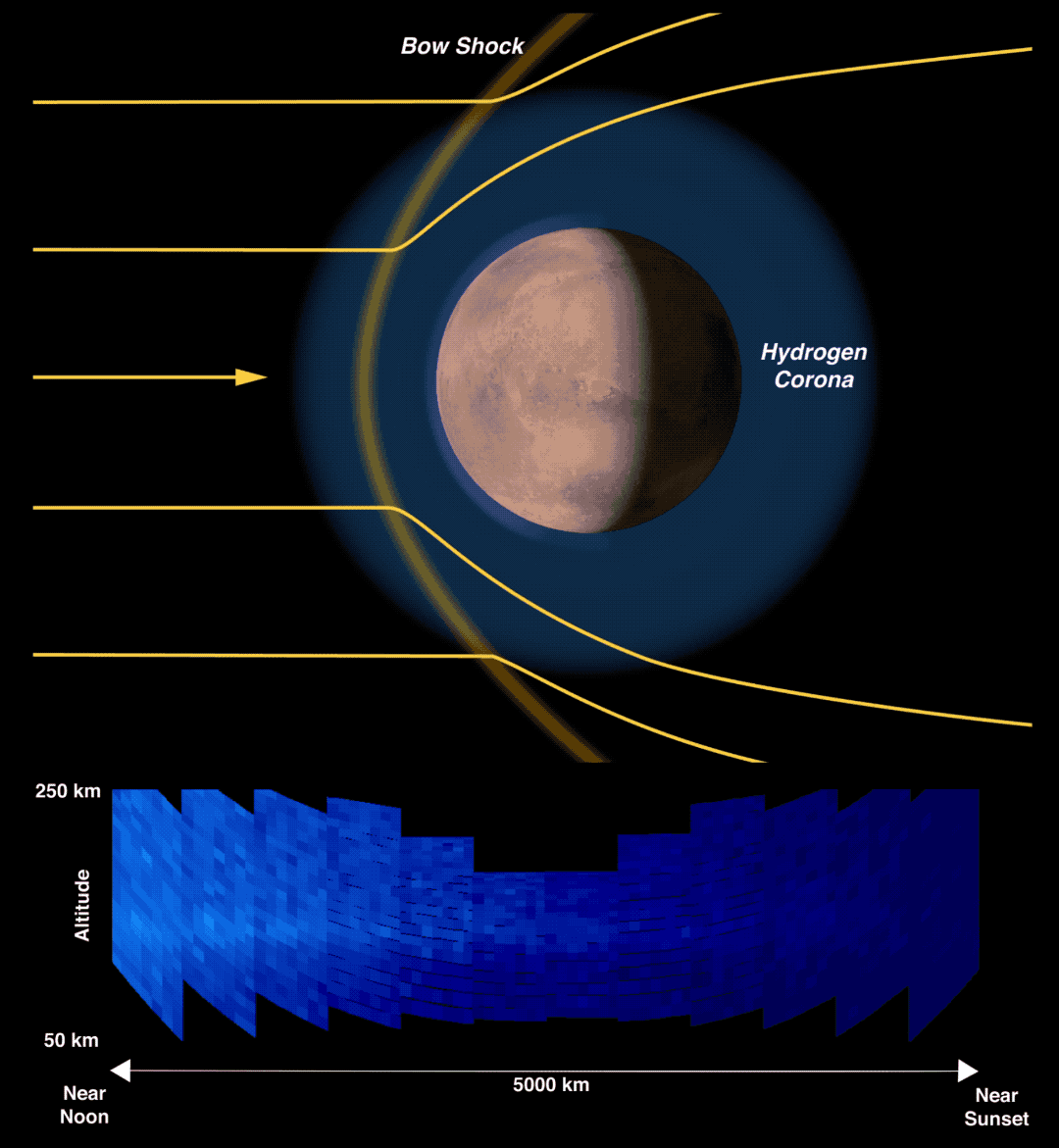Proton Aurora with MAVEN Data
| Credit | NASA/MAVEN/University of Colorado/LASP/Anil Rao |
|---|---|
| Language |
|
MAVEN observations of a proton aurora. In the top panel, natural variability of the solar wind results in occasional dense flows of solar wind protons bombarding Mars. At bottom, observations by MAVEN’s Imaging Ultraviolet Spectrograph show increased ultraviolet emission from the atmosphere when the solar wind is enhanced.
On Earth, the northern and southern lights occur when the solar wind (electrically charged particles from the Sun) follow our planet's geomagnetic field lines to the poles and collide with the upper atmosphere. Mars lacks a global magnetic field, so instead the solar wind piles up in front of Mars in a bow shock, which blocks charged particles from reaching the bulk of the atmosphere. However, in a process first observed by the MAVEN mission, some solar wind protons can slip past the bow shock by first bonding with electrons from the Mars upper atmosphere to form hydrogen atoms. Because these hydrogen atoms are electrically neutral, they can pass through the bow shock and go on to create an ultraviolet proton aurora on the dayside of Mars.
Learn more about MAVEN's observation of a proton aurora at Mars.
For more download options: https://svs.gsfc.nasa.gov/12986

























